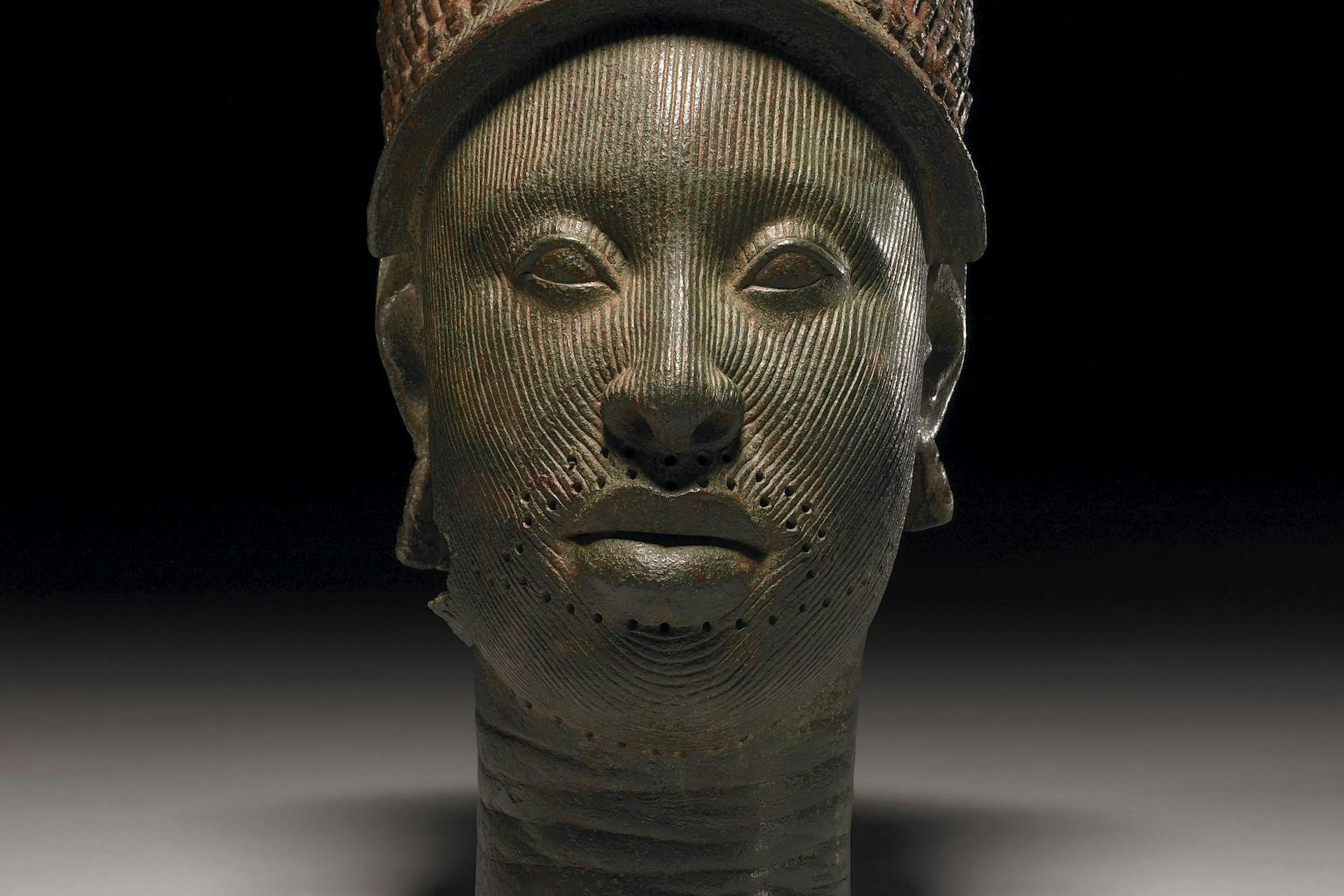Olorun

The brass bust depicts an unknown Yoruba king, by Yoruba artist (14th – 15th century).
British MuseumCC BY-NC-SA 4.0Overview
Olorun—also known as Olodumare—is the head of the Yoruba pantheon. He is primarily worshipped as the god of heaven as well as the wise and fair judge of men’s hearts. Omniscient and omnipresent, he is the father of all oriṣas (the Yoruba word for gods) and is revered as the creator of the universe, heaven, earth, and all life. Olorun is greater than all other deities, and all oriṣas must report to him.[1]
Olorun has multiple manifestations or forms. As Olodumare, he is called the “Great Everlasting Majesty” and is worshipped as creator of the universe. He was the one who decided the earth should be created, assigning the task to Obatala. As Olorun, the god is known as the “Owner of Heaven,” serving as the sky god and father of all oriṣas.[2]
Olorun has no physical image or representation in art and no consecrated shrines. He very rarely descends from heaven, instead sending his messenger Agemo (a chameleon) in his place. Olorun is the impartial judge of all people and ultimately decides the fate of humanity.
Pronunciation
English
Yoruba
Olorun Ọlọ́run Phonetic
IPA
aw-law-roo ɔ̄.lɔ́.ɾũ̄
Olorun and Agemo

This copper alloy vessel depicts eight chameleons. The chameleon held special importance in Nigerian cultures, not just Yourba, by Nigerian artist (ca. 1668 - 1773).
Smithsonian Open AccessCC0Agemo the chameleon was a trusted servant and messenger of Ọlọrun. In one famous myth, he was instrumental to Olorun winning a contest against the sea goddess Olokun. Olokun believed she was the most skilled oriṣa when it came to weaving and dyeing clothes. She therefore challenged Olorun to a clothes-making competition to prove her superiority.
Olorun sent his messenger Agemo in his stead (as was his habit), and Agemo told Olokun that his master would happily enter the contest—assuming the goddess’s cloth was as impressive as she claimed.
To prove her worth, Olokun presented Agemo with a wide range of colored clothes. Every time she showed him a new cloth, Agemo’s skin replicated the color, matching its quality in every way. Eventually, she produced a cloth with multiple vibrant colors, expecting to outdo the chameleon. But Agemo’s skin still mimicked the fine colors and patterns.
Olokun finally conceded defeat, admitting that if a simple messenger could reproduce her work, then Olorun’s skills were certainly more impressive than her own. In this way, Agemo helped his master defeat the sea goddess in the very contest she had demanded.[3]